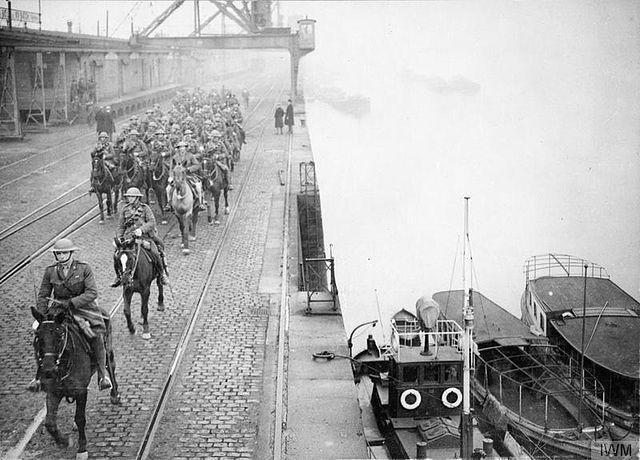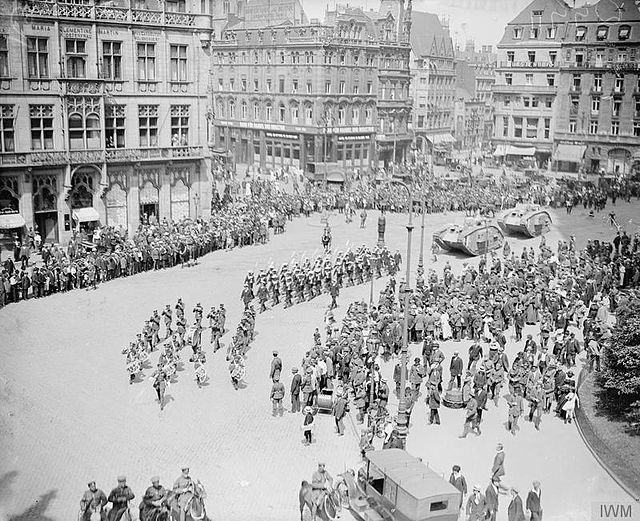British Army of the Rhine
British Army of the Rhine (BAOR) is the name given to two British Army formations of the same name. Both were originally occupation forces in Germany, the first after the First World War and the other, active after the Second World War and during the Cold War, eventually becoming part of NATO's contribution to allied forces there. Both formations had areas of responsibility located around the German section of the River Rhine.
Formal group photograph of British and French officers and commissioners outside the house of the Commander-in-Chief Allied Armies of Occupation, Marienberg
18th Hussars in Cologne, 6 December 1918.
Field Marshal Lord Plumer, General Officer Commanding-in-Chief the British Army of the Rhine, taking the salute from the 29th Division entering Cologne by the Hohenzollern Bridge
Two tanks passing through Cologne for inspection by the VI Corps Commander, General Aylmer Haldane, June 1919
British Forces Germany (BFG) was the generic name for the three services of the British Armed Forces, made up of service personnel, UK Civil Servants, and dependents, based in Germany. It was established following the Second World War, the largest parts of it becoming known as the British Army of the Rhine (BAOR) and RAF Germany (RAFG). Both components had the mission of defending West Germany and remained there for the rest of the Cold War.
Bielefeld Headquarter entrance
Bielefeld Headquarter corner
Bielefeld building
250th anniversary of the Battle of Minden: Mungo Melvin and German General Markus Kneip crossing the Weser.








